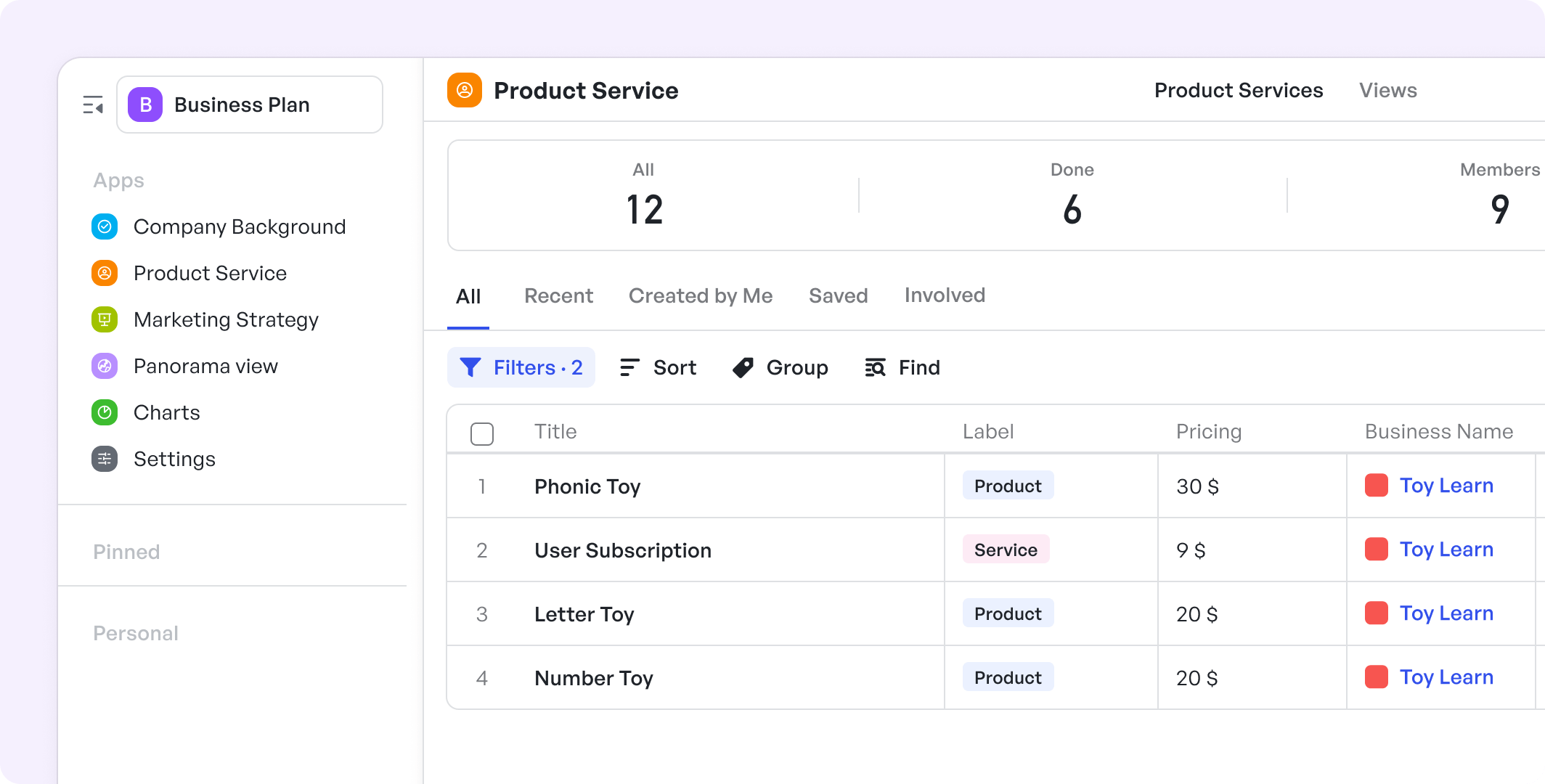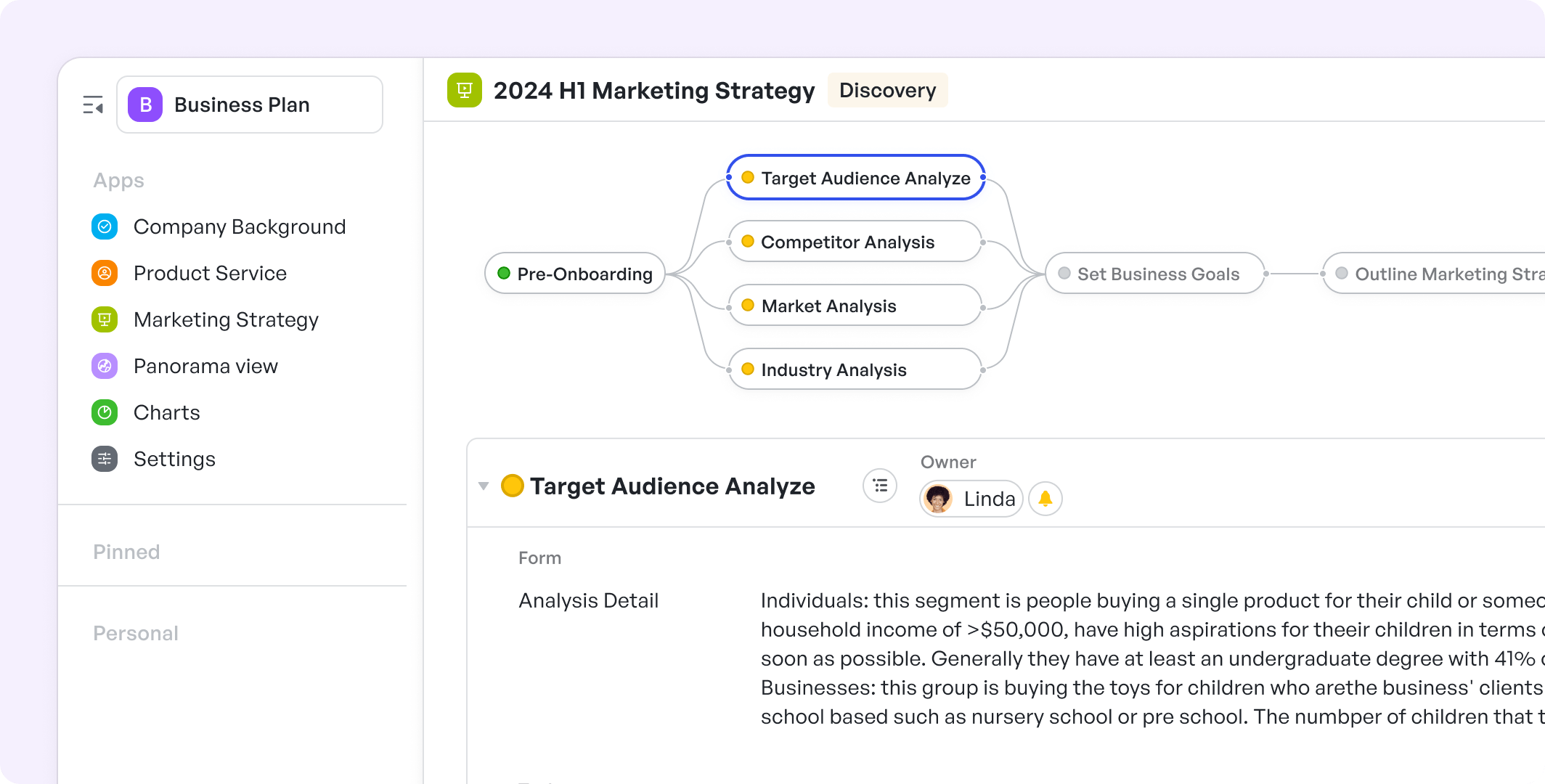Introduction
The Meegle E-Commerce Business Plan Template provides e-commerce practitioners with a comprehensive framework for articulating their vision, goals and projections. It guides the user to conduct a SWOT analysis of the company's products and services and develop a qualified marketing strategy. This helps in providing a clear and convincing roadmap for the success of the business.
Suitable for Teams / Roles
- Entrepreneurs and Founders: Individuals or groups considering starting an e-commerce business will find this template invaluable as it offers a structured approach to translating their ideas into a concrete plan.
- Marketing Teams: A clear business plan that includes detailed market analysis and marketing strategies helps marketing professionals align their efforts with the broader business objectives.
- Product Managers: For those in charge of developing and managing an online product or service offering, this template ensures that their plans are congruent with all other aspects of the business.
- Project Managers and Operational Teams: Operational teams responsible for the setup and management of e-commerce systems benefit from understanding the overarching strategy to optimize the workflow and supply chain procedures.
- E-commerce Managers and Specialists: Professionals who oversee e-commerce platforms and initiatives can use this template to ensure that all facets of their online business are planned and cohesively integrated.
Pre-set Meegle Work Items
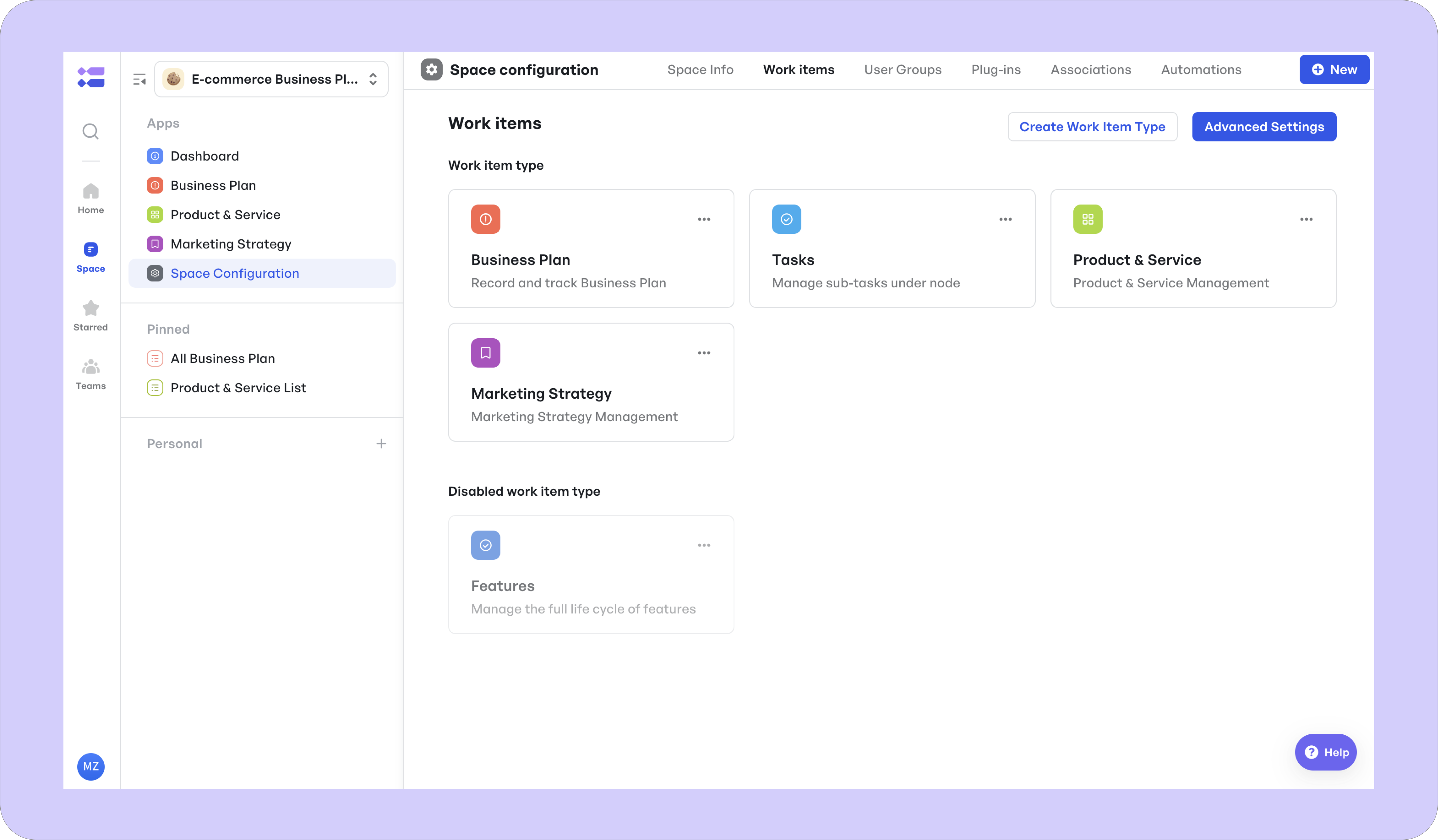
250px|700px|reset
Business Plan Overview
- Executive Summary
- Company Description
- Business Description: Ownership Structure, Mission, Vision, Value, and Key Resources
- Financial Forecasts: Cost Forecasts, Gross Profit Projections
- Milestones or Achievements
Product & Service
- Description
- Audience & Ideal Customer
- SWOT Analysis
Marketing Strategy
- Analysis: Target Audience Analysis, Competitor Analysis, Market Analysis, Industry Analysis
- Goal Setting
- Strategy Making
- Marketing Budget
- Follow Up
How to Start Using the E-commerce Business Plan Template
Step 1: Crafting a Compelling Executive Summary
The executive summary should convey the fundamental aspects of your e-commerce proposal, emerging as a concise yet impactful cross-section for potential investors and partners. It is essential to articulate your mission statement, delineate your specific product or service offerings, and present a concise overview of your business objectives. Financial highlights and growth projections must be underscored, establishing a cogent overview that encapsulates the viability and ambition of your e-commerce venture.
Open the Business Plan work item, click on the【+New Business Plan】 button and fill in the required fields.
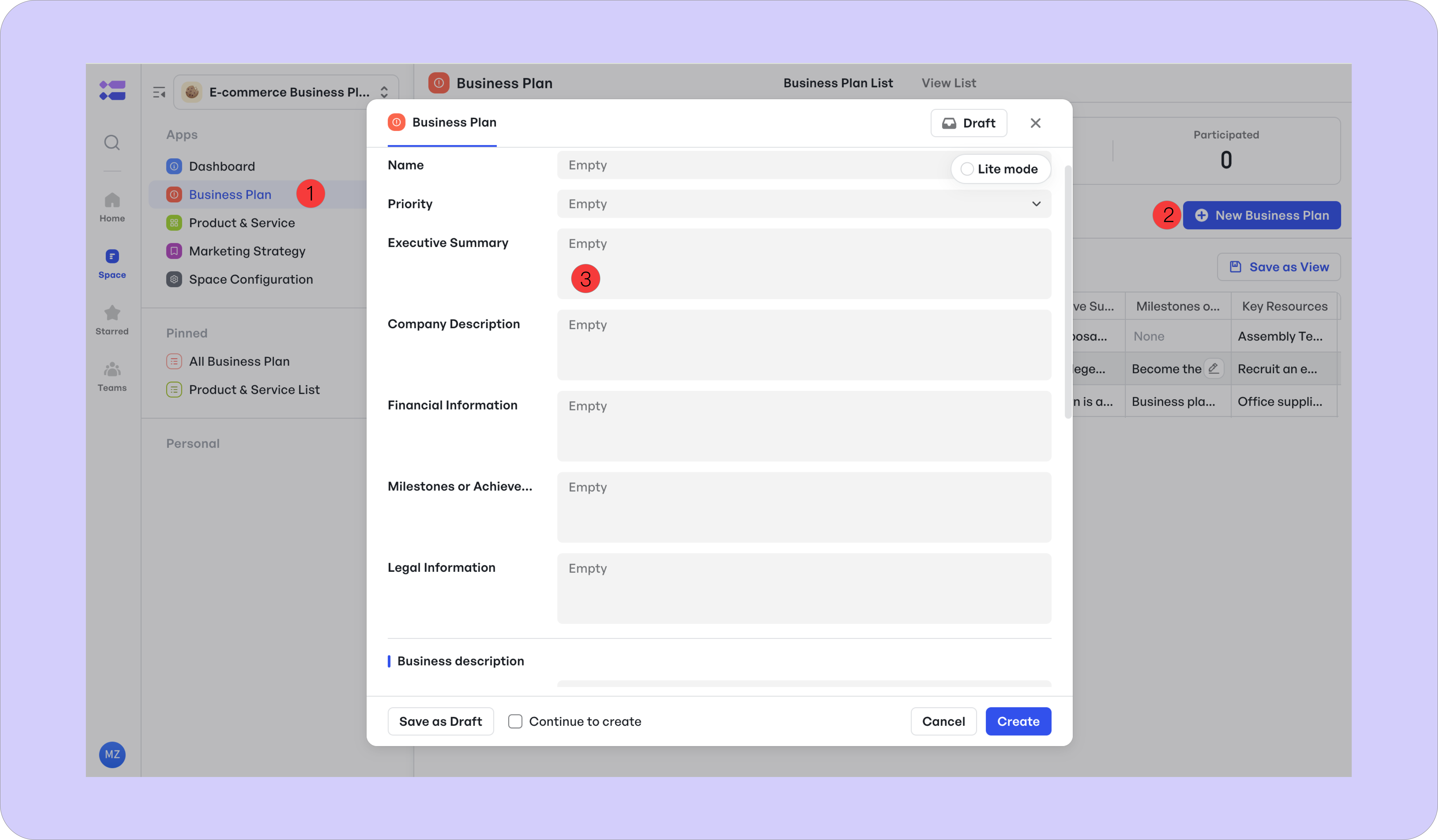
250px|700px|reset
Step 2: Articulating Your E-Commerce Business Framework
The business description section demands a detailed narrative of your e-commerce proposition. Define the business model that will underpin your commercial activities, elaborate on the core values driving your brand, and enumerate the strategic aspirations undergirding your e-commerce pursuit. A comprehensive account of the leadership structure, proprietary edge, and ownership configuration should round out this section, solidifying the business's strategic direction and long-term vision.
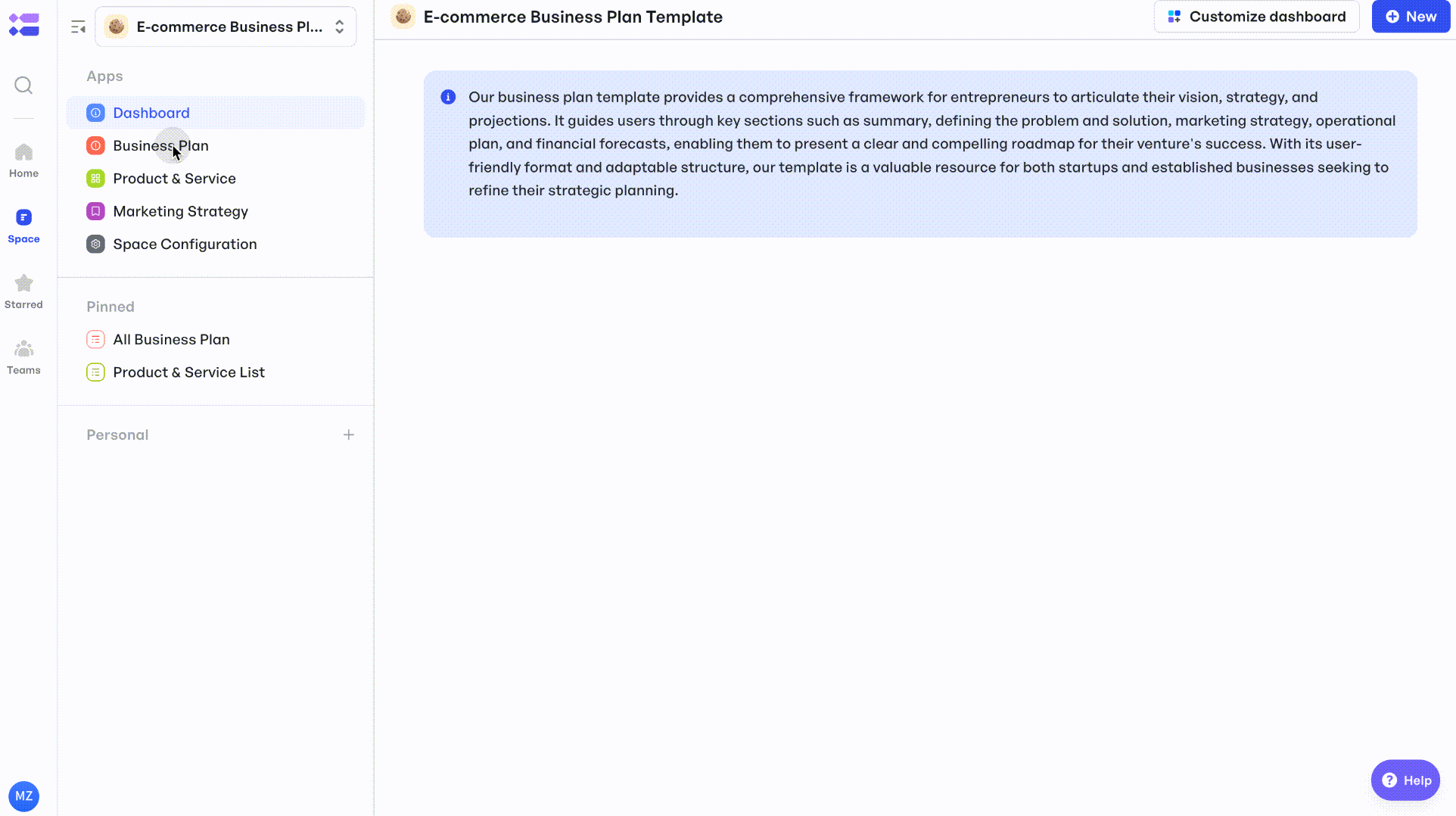
250px|700px|reset
Step 3: Conducting a Thorough Market Analysis
Comprehensive market analysis is the compass that guides the strategic positioning of your e-commerce platform. This critical section should mirror the depth of your market understanding, encompass a granular assessment of target market demography, and customer behavior patterns. Examine and present the competitive environment, spotlight your direct and indirect competitors, and scrutinize market trends to predict future shifts. Anchoring your business plan in data-driven insights can delineate potential growth trajectories and provide a framework for informed strategic decision-making in the e-commerce domain.
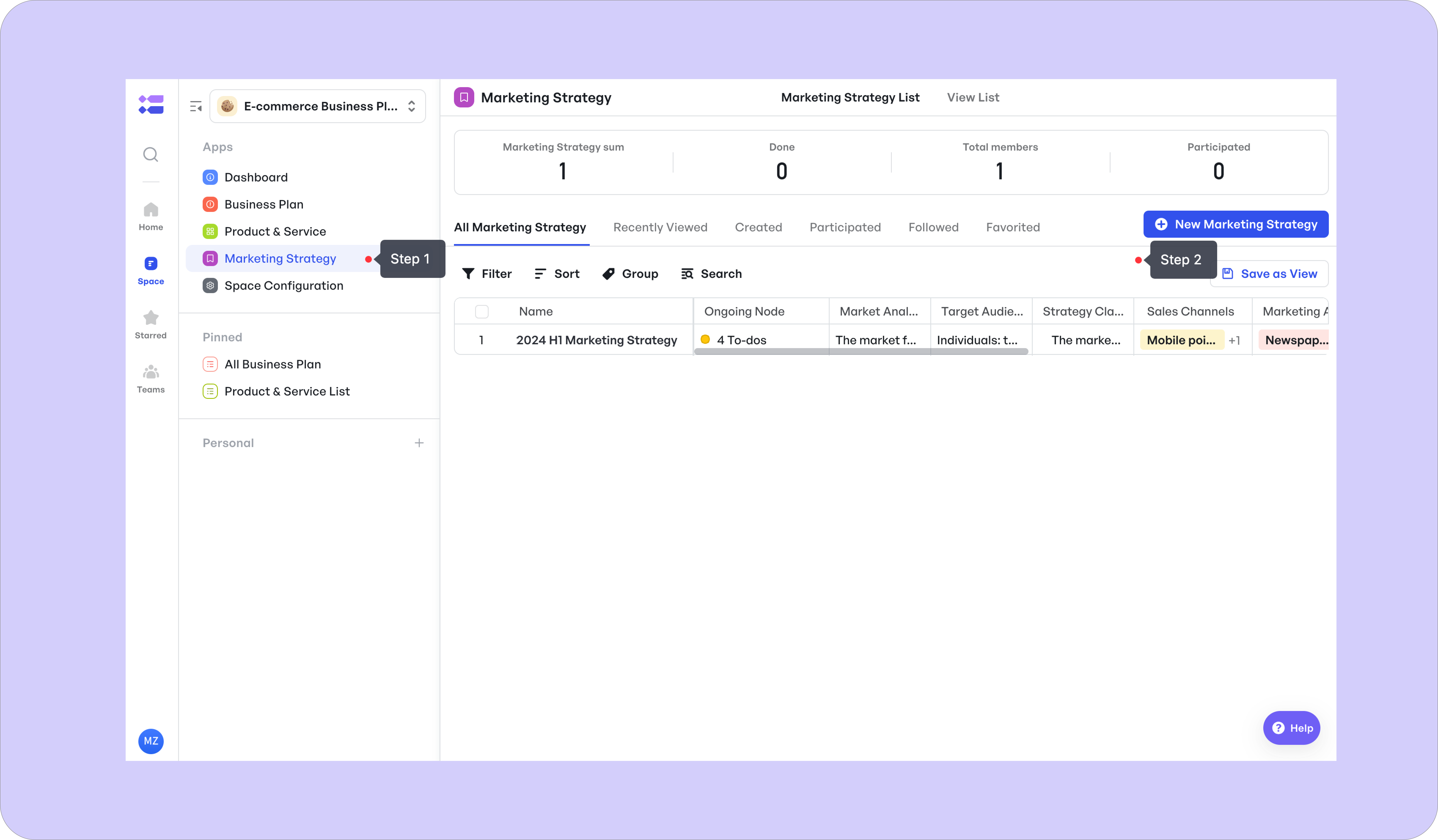
250px|700px|reset
(Click on the【+New Marketing Strategy】 button and create a standard marketing process.)
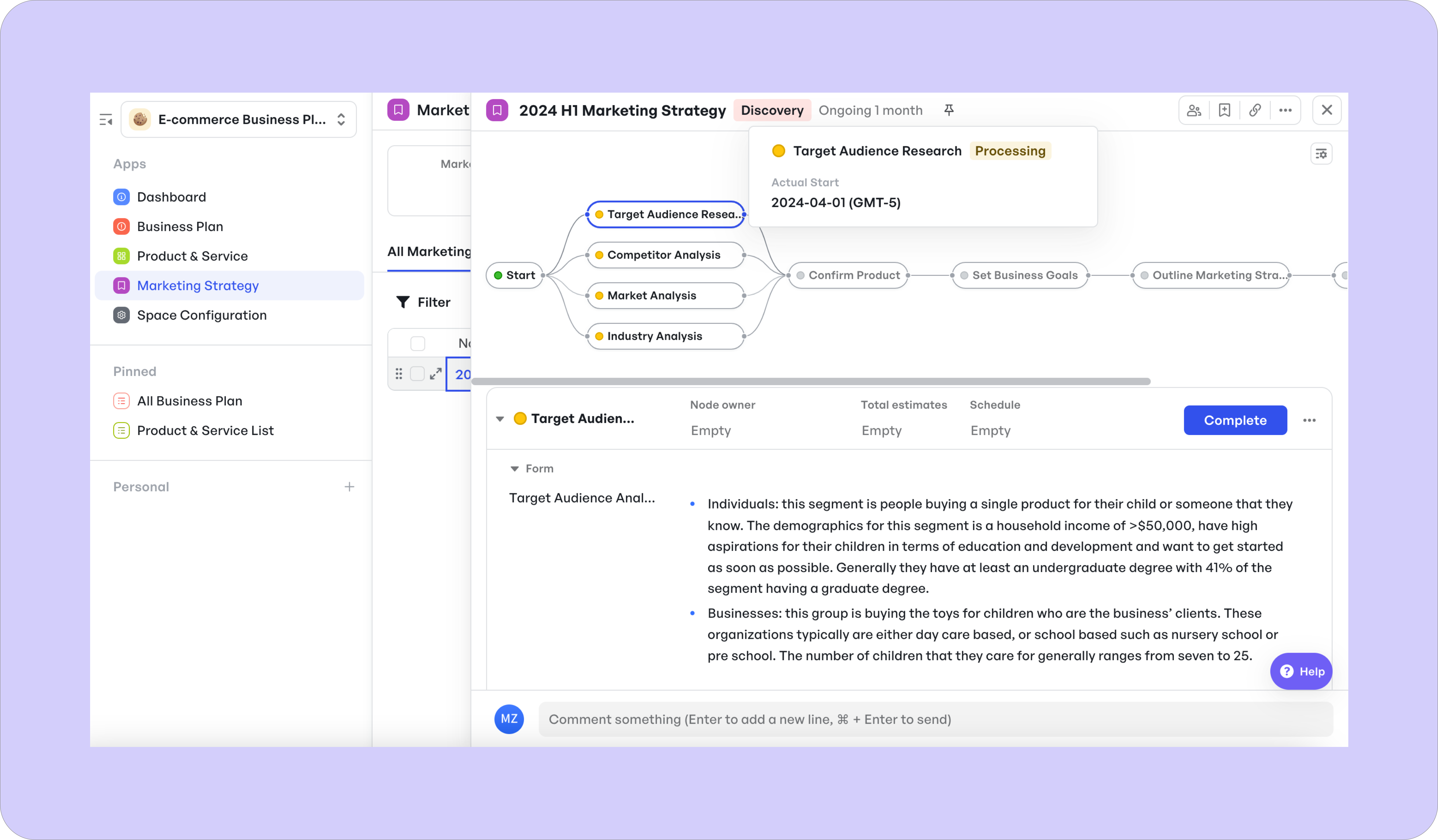
250px|700px|reset
(Follow the node-driven workflow in the Marketing Strategy work item and fill in the required forms.)
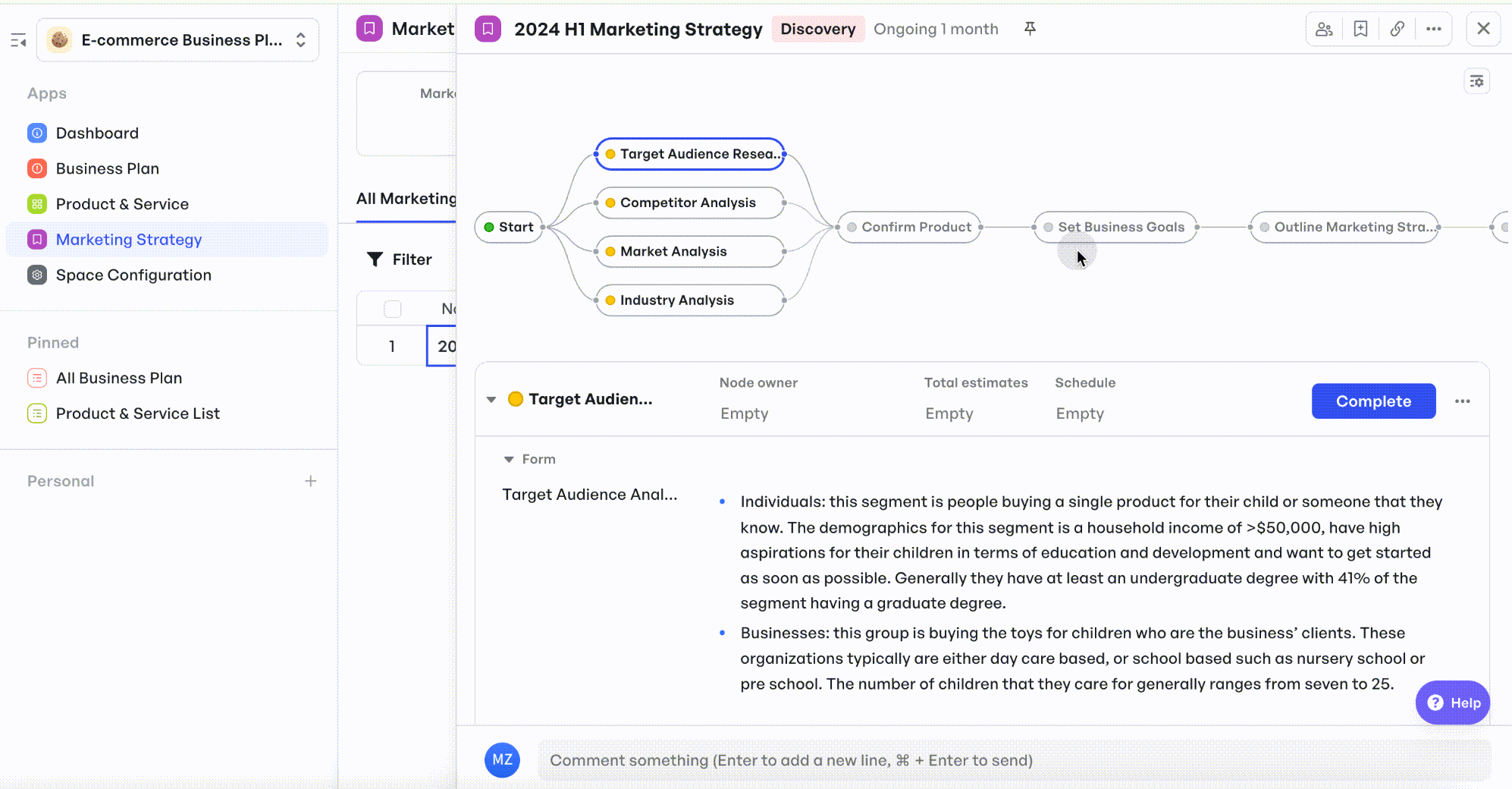
250px|700px|reset
Step 4: Detailing Your Product and Service Offerings
The products and services segment forms the substantive core of your e-commerce business plan. Herein, enumerate with precision the array of products or services you propose to offer. Articulate the distinct benefits and features of your offerings, rationalize your pricing strategy, and delineate developmental pathways along with supply chain specifics. Discourse on the product lifecycle will alloy prospects with pragmatism, allowing stakeholders to envisage how your offerings are expected to evolve in alignment with market demands and technological advancements.
When you complete these analysis nodes in the standard workflow, and arrive at the [Confirm Product or Serice] node, please open the 【Product & Service】work item and create profiles for your product and service.
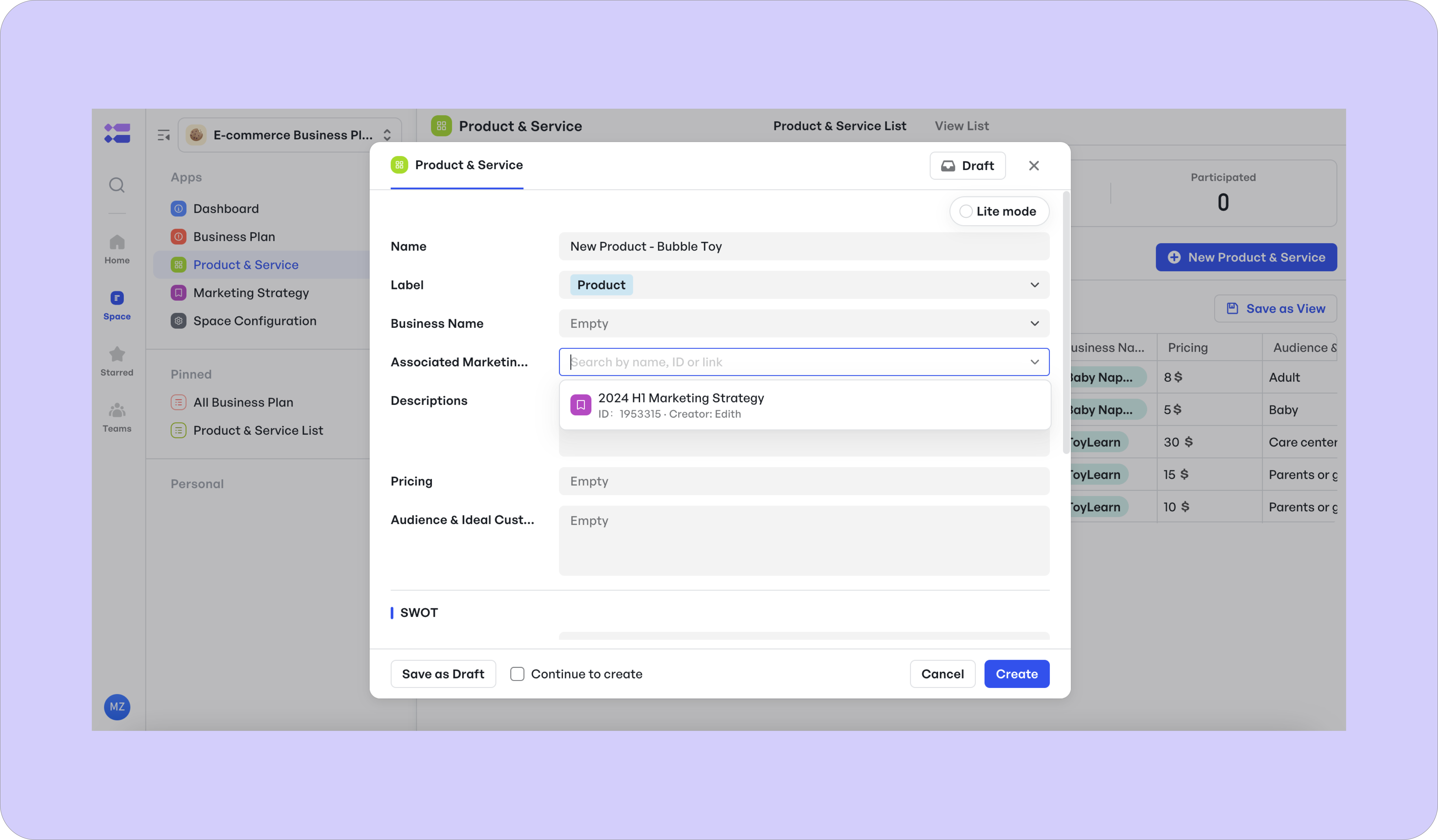
250px|700px|reset
(Fill in the information form and connect your product and service with the marketing strategy.)
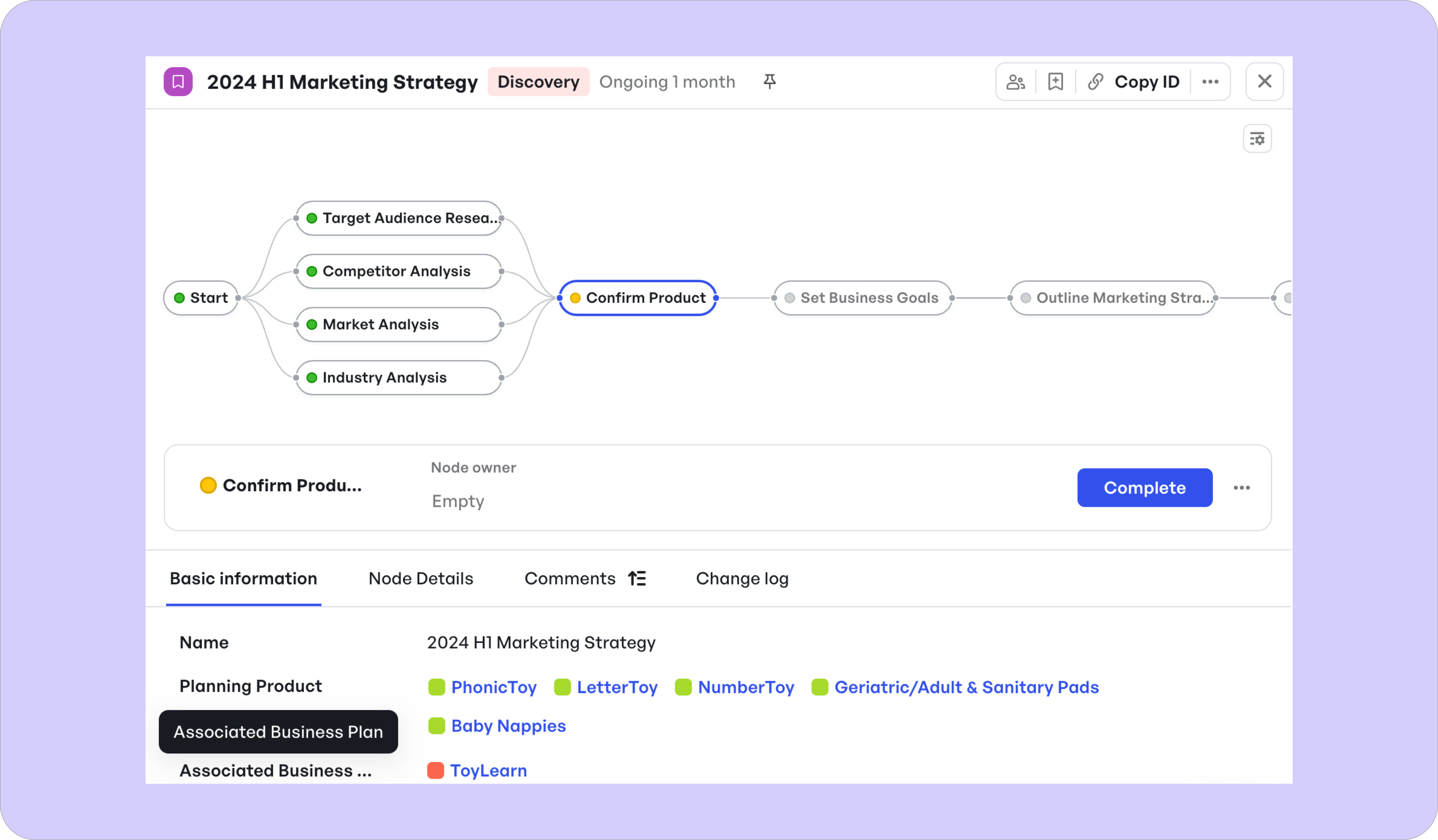
250px|700px|reset
(The business plan and product are connected in the marketing strategy workflow via custom fields.)
Step 5: Formulating an Effective Marketing and Sales Strategy
The articulation of an incisive marketing and sales strategy is a cornerstone for the success of any e-commerce venture. This section must detail the pathways for capturing market attention and converting prospects into loyal customers. Enumerate your market positioning and brand messaging while delineating the channels through which you will engage with your audience. Furthermore, outline the techniques for driving traffic and conversion rates, and define mechanisms for measuring and optimizing these metrics over time. The establishment of a structured customer journey and after-sales follow-up processes will reinforce customer retention and compound brand equity.
Step 6: Outlining Your Operational Tactics
In this segment, clarify the day-to-day operational logistics of your e-commerce platform. This encompasses the management of the supply chain, inventory control, order fulfillment, and customer service strategy. A detailed review of the technology stack, including the e-commerce platform, payment processing systems, and customer relationship management tools is crucial. The section should further detail shipping and handling policies, sourcing strategies, and any partnerships that support the operational framework. Effective operations management is instrumental for delivering customer satisfaction and sustaining business growth.
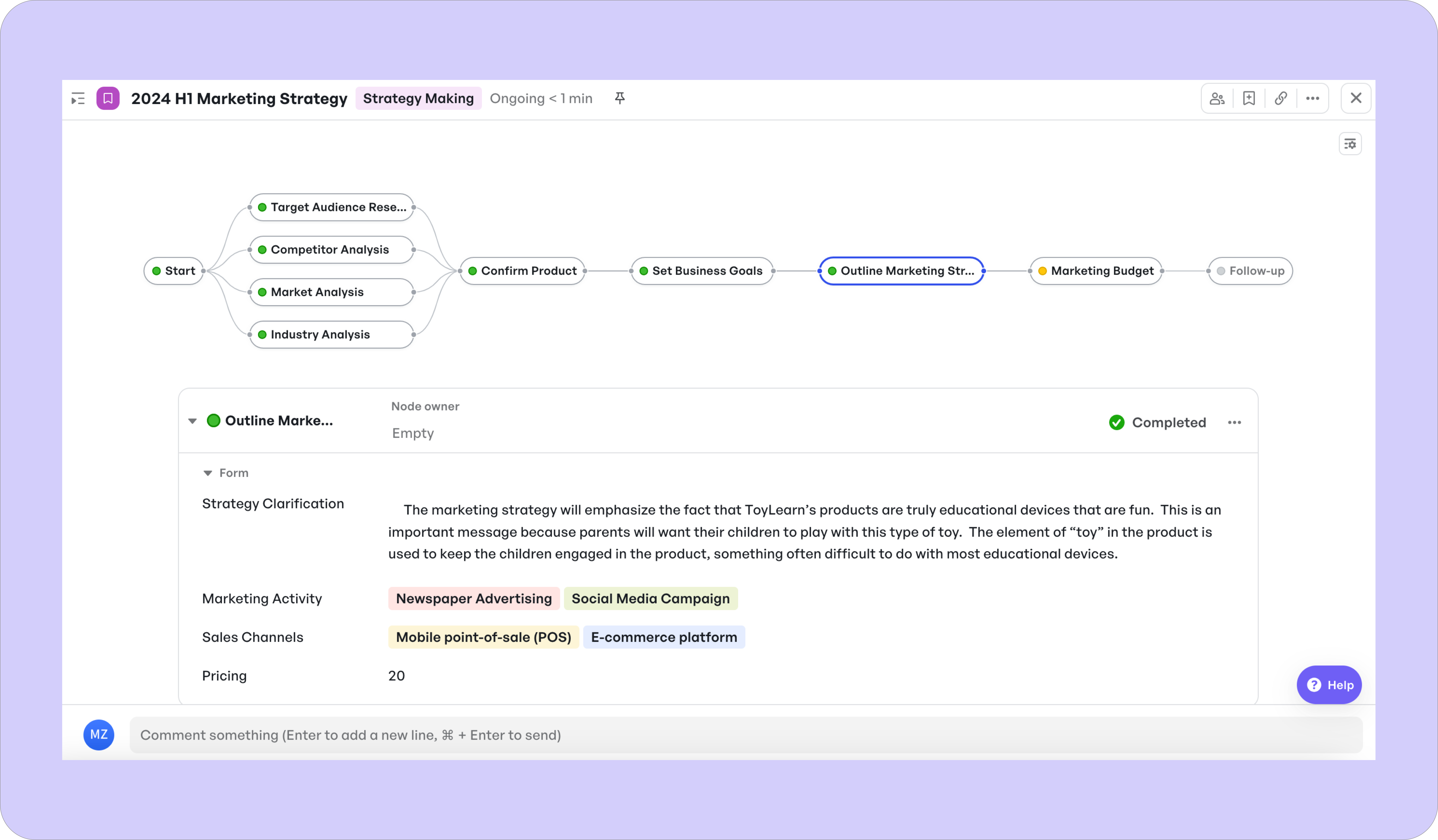
250px|700px|reset
Step 7: Defining Your Organizational and Management Structure
An effective organizational structure underpins the execution capacity of your e-commerce business. This entails charting a clear hierarchy, delineating roles and responsibilities, and identifying key personnel and their qualifications. Equally essential is the illustration of the governance framework that will drive strategic decisions and operational oversight. Discuss the roles of any key advisors or consultants and the mechanisms by which your enterprise will scale its human resources in conjunction with business expansion.
Step 8: Reviewing & Updating
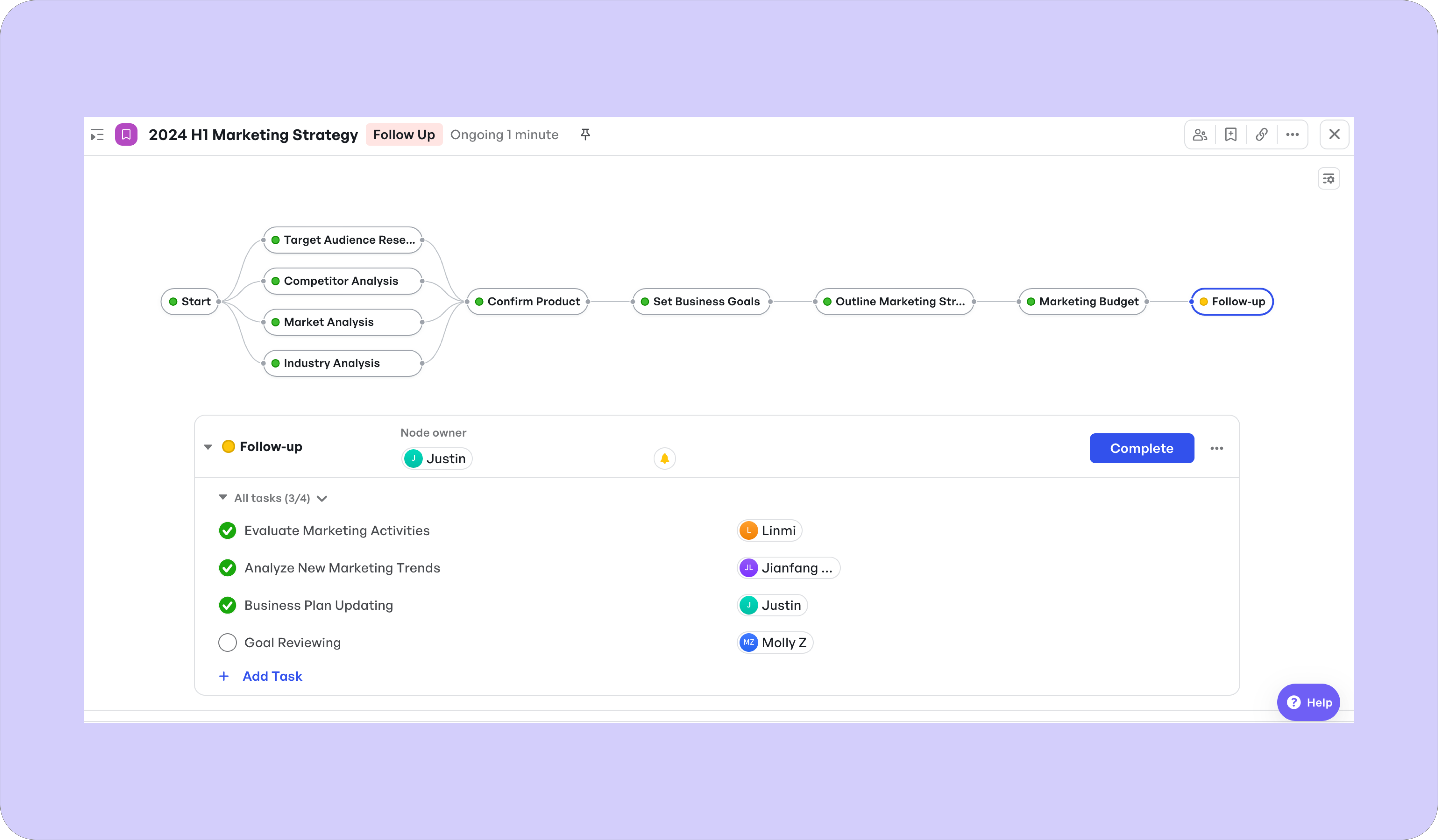
250px|700px|reset
FAQ
- What key elements should be included in an E-commerce Business Plan?
- What key elements should be included in an E-commerce Business Plan?
Essential components include an executive summary, company description, market analysis, operational plan, product descriptions, marketing and sales strategies, financial plan, and analysis of competitive landscape. Each section plays a vital role in presenting a comprehensive view of your business.
- How do I conduct market analysis for my E-commerce Business Plan?
- How do I conduct market analysis for my E-commerce Business Plan?
Market analysis involves researching your industry, target market, and competitors. Use online tools, surveys, interviews, and public databases to gather data. Analyze trends, market demand, customer needs, and competitive strategies to identify your market positioning and growth opportunities.
- What financial projections are necessary for an E-commerce Business Plan?
- What financial projections are necessary for an E-commerce Business Plan?
Key financial projections include income statements, balance sheets, cash flow statements, and capital expenditure budgets for the next three to five years. Additionally, break-even analysis, cost of goods sold (COGS), and pricing strategies should be outlined to predict revenue and profitability.
- How often should I update my E-commerce Business Plan?
- How often should I update my E-commerce Business Plan?
Your Business Plan should be a living document, updated annually or whenever significant internal or external changes occur, such as market shifts, new competitors, or changes in customer behavior. Regular updates ensure that your business remains aligned with its strategic objectives and adapts to evolving market conditions.
